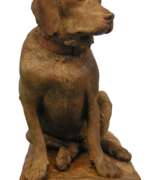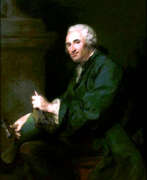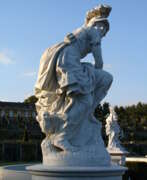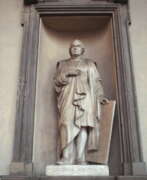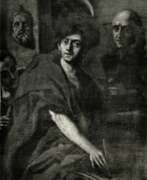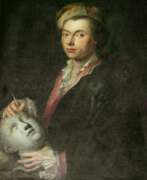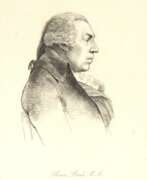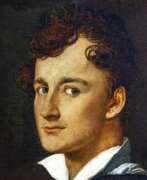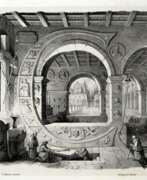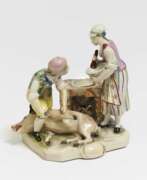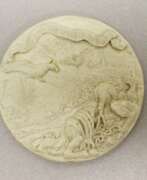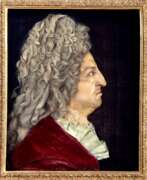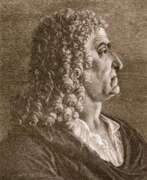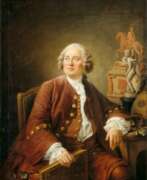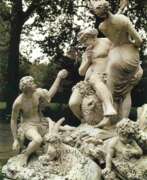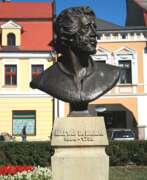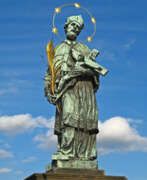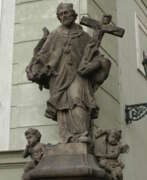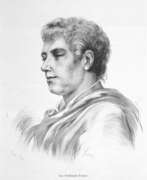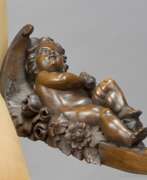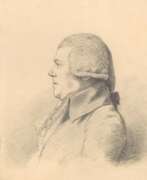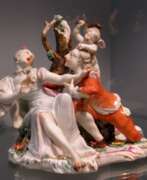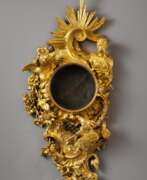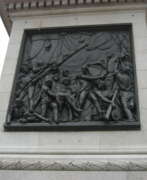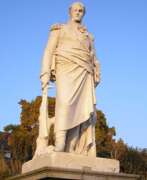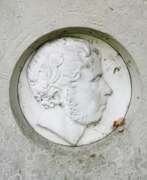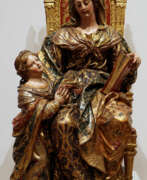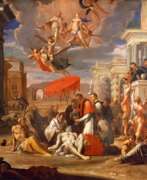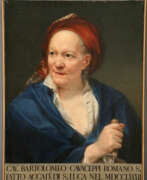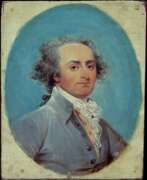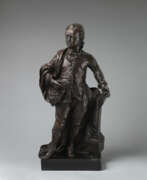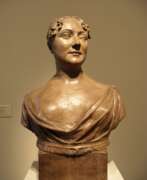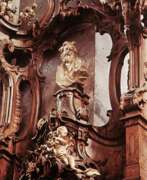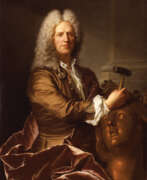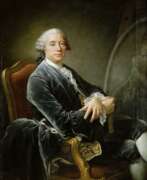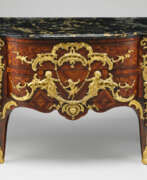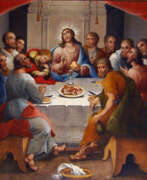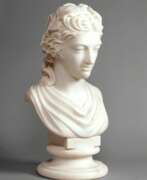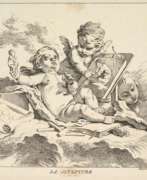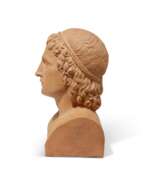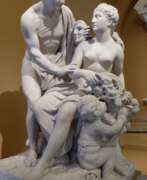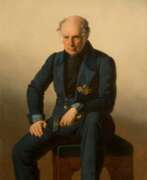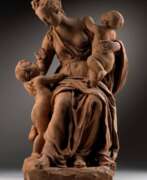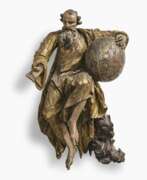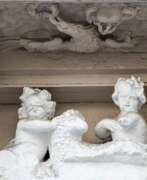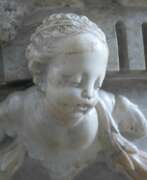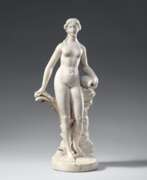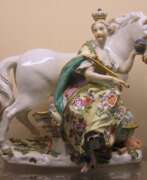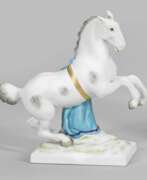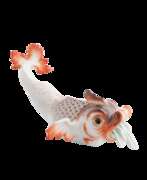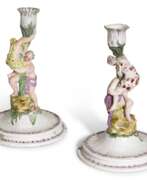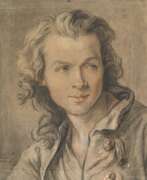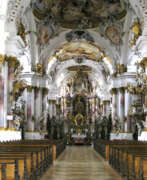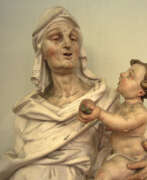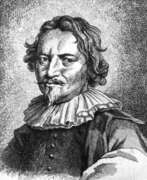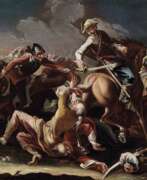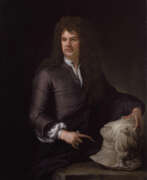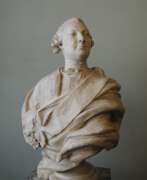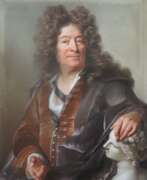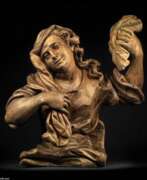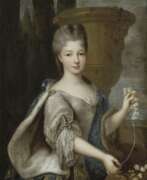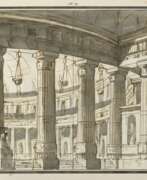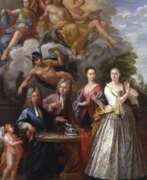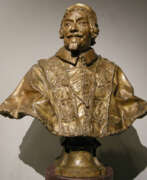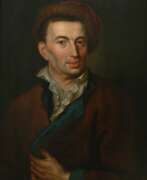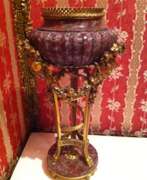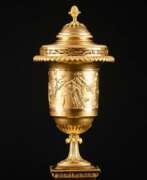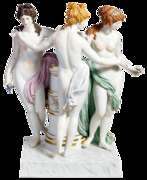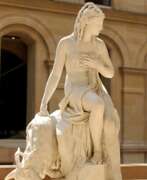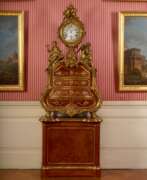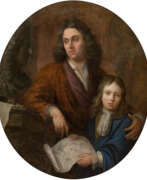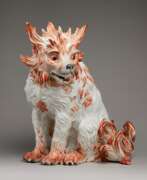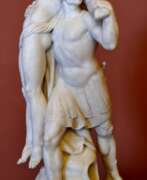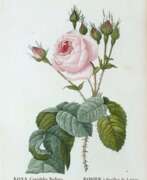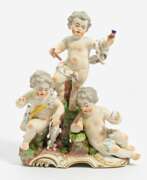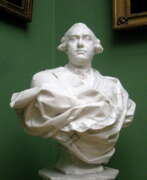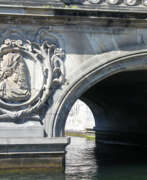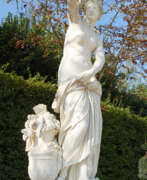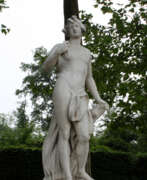Sculptors 18th century
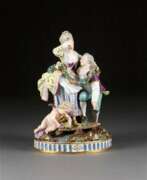

Michel Victor Acier was a French porcelain sculptor and model-maker who worked at the famous Saxon porcelain manufactory in Meissen from 1765 to 1779. With his work in the activities of the manufactory is associated with the period of neoclassicism. Michel-Victor was the maternal great-grandfather of the composer Pyotr Ilyich Tchaikovsky.
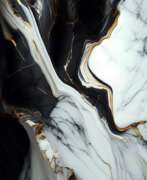

Andrea Salvatore di Antonio Aglio was an Italian painter and sculptor who specialised in painting on marble.
Andrea Salvatore Aglio rediscovered and modified the technique known as encaustic, which allowed him to paint and reproduce works of art on marble.
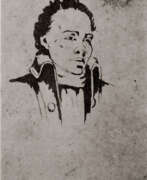

Antônio Francisco Lisboa, known as Aleijadinho, was a renowned sculptor, carver, and architect in Colonial Brazil. His exceptional works adorned numerous churches across the country, showcasing a style influenced by Baroque and Rococo. Considered the greatest exponent of colonial art in Brazil, Aleijadinho is recognized internationally as a leading figure in Baroque art in the Americas.
Despite limited biographical information, his contributions are celebrated through the vast body of work he left behind. His creations, including carvings, architectural projects, reliefs, and statues, were concentrated in Minas Gerais, notably in Ouro Preto, Sabará, São João del-Rei, and Congonhas. The Church of Saint Francis of Assisi in Ouro Preto and the Sanctuary of Bom Jesus of Matosinhos showcase some of his most significant works.
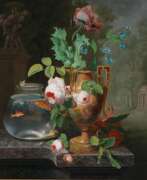

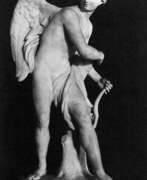

Louis-Simon Boizot was a French artist of the second half of the 18th and early 19th centuries. He is known as a sculptor of the neoclassical style. Boizot was widely famous for the production of busts of prominent people of France and multi-figure sculptural compositions of Sevres porcelain.
Louis-Simon Boizot is the most famous representative of the family dynasty of artists. His father Antoine Boizot was a painter and his younger sister, Marie-Louise-Adelaide Boizot, a draftsman and engraver. Louis-Simon Boizot enjoyed the special patronage of King Louis XVI and Queen Marie-Antoinette, while the Russian Empress Catherine II personally ordered original porcelain pieces from the master.
Boizot was also often engaged in the manufacture of sculptural decorations for the public buildings of Paris - churches and palaces. He mastered the techniques of processing a variety of materials and created masterpieces not only of marble, but also of porcelain and bronze.
In 1805 Boizot was appointed head of the French National Academy of Arts.
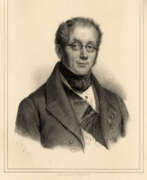

François Joseph Bosio was a French Neoclassical sculptor.
François Joseph Bosio was a pupil of the sculptor Augustin Pajou. With the support of the latter he made a study trip to Italy, where he studied statues by antique masters. He was also court sculptor to Kings Louis XVIII and Charles X.
At that time, he was favored by the French monarchs: Napoleon I decorated him with the Legion of Honor, Louis XVIII awarded him with the royal order of Saint Michail, he became an Institute of France member (in 1816) and in 1822, was granted the title of royal sculptor.
He was the director of the Academy of Fine Arts in Paris. The influence of Antonio Canova is noticeable in his sculptures.
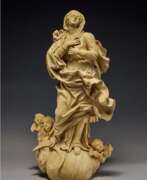

Matteo Bottiglieri was an Italian sculptor and painter from Naples. One of his first works is a marble "Dead Christ" (1724), in the crypt of the Capua Cathedral, perhaps executed after drawings by Francesco Solimena. In 1733 he executed three works for the Church of the Crucifix in Salerno, and in the same year he took part in the decoration of San Giuseppe dei Ruffi in Naples. He also executed numerous drawings portraying shepherds, later used as models for figures in Nativity scenes. Also attributed to him is a group of "Christ and the Samaritan" in the cloister of San Gregorio Armeno, as well as the sepulchre of Alessandro Vicentini in the right transept of the church of San Domenico Maggiore.
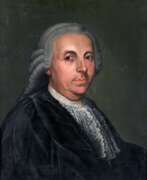

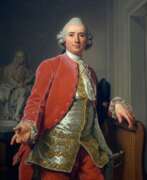

Jean-Jacques Caffieri was an 18th-century French sculptor. He is known as a brilliant representative of academism. Caffieri was famous for his marble images of figures of science and culture, sculptures on biblical and mythological themes. In particular, he made a series of busts and sculptures of artists, composers and playwrights for the Comédie Française theater.
Jean-Jacques Caffieri was the most famous, but by no means the only representative of the family dynasty of hereditary artists - the largest in France. In addition to him, his grandfather Philippe Caffieri, his father Jacques Caffieri, as well as his uncle and three brothers made significant contributions to French art.
Caffieri was made an honorary member of the Royal Academy of Arts, was appointed to the prestigious post of court sculptor to King Louis XV, became a professor at the Royal Academy of Arts and held that position for almost 20 years. His works today adorn the collections of major French museums.
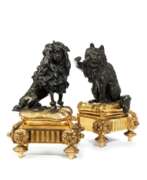

Philippe Caffiéri was a French sculptor. The son of Jacques Caffieri, he was received as a maître fondeur-ciseleur, joined his father's workshop and sometimes signed his independent works, especially after the death of his father in 1755, P.CAFFIERI.
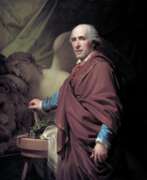

Antonio Canova was an Italian sculptor of the late 18th and early 19th centuries. He is known as a bright representative of neoclassicism in European fine art. Canova was a follower of traditions of artists of antiquity and Renaissance. Among admirers of his creativity there were many representatives of ruling dynasties of Europe.
Antonio Canova himself created more than 50 statues, and together with his assistants - about 180 works. He gained influential patrons and had a reputation as the most important European sculptor of his time. Among his customers was Napoleon Bonaparte, whose statue Canova carved from marble, depicting the emperor as Mars.
Most of Canova's works today decorate the expositions of the world's leading museums, such as the halls of the Louvre and the Hermitage.
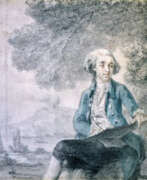

Louis-François Cassas was a distinguished French landscape painter, sculptor, architect, archeologist and antiquary.
Besides his architectural and archaeological drawings and sketches, he drew numerous costumes studies, views and processions, as well as scenes from daily life, plants and animals of all sorts. He also exhibited views of his travels at the "Salons", which were periodic art exhibitions sponsored by the French Académie Royale, in 1804 and 1814, and published Picturesque views of the Principal Sites and Monuments of Greece, of Sicily, and of the Seven Hills of Rome, of which thirty parts had already been published by 1813.
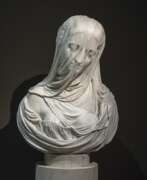

Antonio Corradini was an Italian painter and sculptor of the Baroque period.
He was a pupil of the sculptor Antonio Tarsia (1663 - c. 1739) and worked in Venice, Dresden and St. Petersburg. In Vienna, he was court sculptor to Holy Roman Emperor Charles VI for 10 years.
Corradini became famous for his sculptures "under the veil", through which the contours of the face and body are discernible. Contemporaries were delighted by this inscrutable art. In 1716-1717 Antonio Corradini executed eighteen busts and two statues for the Summer Garden in St. Petersburg by special order of the Russian Tsar Peter the Great.
Then the master was followed by orders from all over Europe, he created many more sculptures on religious, mythical and allegorical subjects. His works can still be seen in many museums and private collections around the world.
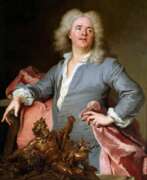

Guillaume Coustou the Elder was a French sculptor of the Baroque and Louis XIV style. He was a royal sculptor for Louis XIV and Louis XV and became Director of the Royal Academy of Painting and Sculpture in 1735. He is best known for his monumental statues of horses made for the Chateau of Marly, whose replicas now stand in the Place de la Concorde in Paris.
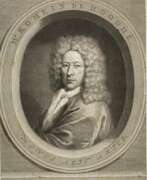

Romeyn de Hooghe was a Dutch painter, sculptor, engraver and caricaturist of the late Baroque period, writer and philosopher.
Hooghe became famous for his political caricatures of King Louis XIV of France and propaganda pamphlets in support of William of Orange. He portrayed the war against the French monarch and his allies as a struggle between freedom and religious despotism.
Romeyn de Hooghe was a superb engraver and created over 3,500 engravings during his lifetime. His most important work is Hieroglyphica of Merkbeelden der oude volkeren (Hieroglyphics or Symbols of the Ancient Peoples), where he appeared not only as a consummate master of engraving, but also as a historian, talented writer and philosopher. This book has long been regarded in Europe as one of the most authoritative sources on classical mythology. It contains 64 engravings illustrating all stages of the narrative of myths, ancient cults and beliefs, and the interpretation of scripture, a guide to medieval Europe.
Romeyn de Hooghe also illustrated books and painted large panels. During his lifetime he was widely recognized as a painter and sculptor not only in his own country but also in other European countries.
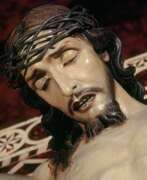

Jose de Mora was a Spanish sculptor renowned for his contributions to Baroque art. Born in Baza in 1642, Mora was the eldest son of sculptor Bernardo de Mora and notably a pupil of Alonso Cano. His career was distinguished early on when he moved to Madrid in 1669, two years after Cano's death, to work with Sebastián de Herrera Barnuevo, another of Cano's pupils. Mora's reputation was further solidified in 1672 when he became a sculptor for King Charles II, highlighting his significance in the Spanish royal court.
Mora's work is celebrated for its expressive minimalism and austere style, a deviation from his mentor Cano's approach, yet achieving a distinct artistic effectiveness. His sculptures, particularly those of religious figures, are characterized by a unique blend of realism and emotion, making them profound objects of devotion. Notable works include the Christ of Mercy and Our Lady of Sorrows in Granada, among others found in the cities of Jaén, Seville, Valladolid, and Córdoba.
One of Mora's masterpieces, the Virgin of Sorrows, is held in high esteem for its technical virtuosity. This painted pinewood bust, adorned with ivory and glass to achieve lifelike details, exemplifies Mora's skill in using realistic details to evoke emotional resonance. This piece, among others, underscores Mora's contribution to Spanish Baroque sculpture and his ability to convey intense emotion through his art.
Mora's legacy is preserved in various collections, including the Victoria and Albert Museum, which houses his bust of the Virgin of Sorrows. His works continue to be a focal point for scholars and enthusiasts of Baroque art, as seen in exhibitions and the digital archives of Wikimedia Commons, offering insight into his contributions to the art world.
For art collectors and experts seeking to delve deeper into the works of Jose de Mora, signing up for updates on new sales and auction events can offer exclusive access to acquiring pieces by this eminent sculptor. This subscription will ensure that enthusiasts are well-informed about opportunities to own a part of Spanish Baroque history.
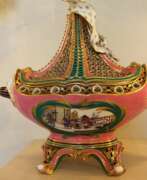

Jean-Claude Chambellan Duplessis was a goldsmith, sculptor and ceramics modeller, bronze-founder and decorative designer working in the Rococo manner. He served as artistic director of the Vincennes porcelain manufactory and its successor at Sèvres from 1748 to his death in 1774 and as royal goldsmith (orfèvre du Roi) from 1758 to 1774.
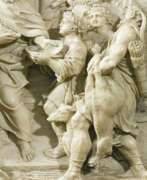

Ignaz Elhafen was an Austrian Baroque sculptor.
Ignaz Elhafen was born in Innsbruck, where he received an artistic education: he learned the art of woodcarving. Then in Rome he perfected his skills in the artistic processing of ivory. Later he worked as court painter for the Elector in Düsseldorf.
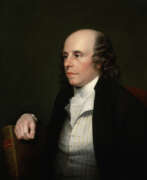

John Flaxman was a British sculptor and draughtsman, and a leading figure in British and European Neoclassicism. Early in his career, he worked as a modeller for Josiah Wedgwood's pottery. He spent several years in Rome, where he produced his first book illustrations. He was a prolific maker of funerary monuments.
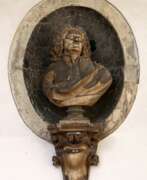

Giovanni Battista (Giambattista) Foggini was an Italian sculptor active in Florence, renowned mainly for small bronze statuary.
Foggini's pupils included Fernando Fuga, his nephew Filippo della Valle, Balthasar Permoser, Giovacchino Fortini and Giovanni Baratta. Massimiliano Soldani Benzi was a contemporary student with Foggini in Rome and also active in small bronze sculpture.


Gabriël Gruppello was a Flemish Baroque sculptor who produced religious and mythological sculptures, portraits and public sculptures. He worked in Flanders, France and Germany. He was a virtuoso sculptor who enjoyed the patronage of several European rulers.
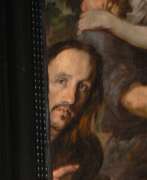

Meinrad Guggenbichler, also Johann Meinrad Guggenbichler, was a sculptor.
He worked as a stone sculptor and from the 1670s he created altars, church utensils and sculptures for churches and monasteries in Switzerland and Austria, as well as statues of famous personalities.


Christopher Hewetson - Irish sculptor, a major master neoclassicist. He graduated from college in the province of Kilkenny, then moved from Thomastown to Dublin, where he studied in the workshop of the leading local master John van Nost the Younger, performing mainly works of park sculpture.
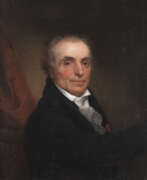

Jean-Antoine Houdon was a French sculptor of the late 18th and early 19th centuries. He is known as a master of portrait sculptures. While gravitating toward naturalism and classicism, Houdon remained a faithful follower of an elegant style intended for the rich salons and royal palaces. Houdon's work is considered the crowning glory of the Rococo style. His biography is closely intertwined with the end of the Enlightenment, the Napoleonic Wars, and the French Revolution.
Jean-Antoine Houdon was famous for his subtle understanding of the dynamics of the human body. In each work, he tried to convey not only the individual traits but also the character of the character. His desire for naturalism, authenticity, allowed the author to create works that to this day are considered the benchmark for teaching plastic anatomy.
Among Houdon's most famous sculptures are Bust of Catherine II and Voltaire Seated in an Armchair. The statue of the French thinker was commissioned by the Russian Empress Catherine II, with whom he was personally acquainted.


Étienne-Louis Infroit was an 18th-century French cabinetmaker and sculptor. He made carved frames with picture frames. He quickly became famous and stamped all of his works. His frames varied in form and combination and were chosen specifically for the works of artists of the time.
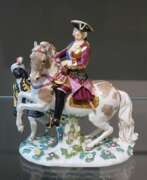

Johann Joachim Kändler was a German sculptor and porcelain artist best known for his role in transforming European porcelain, particularly through his work at the Meissen porcelain factory. His sculptures and figurines, characterized by their natural motifs and intricate details, significantly impacted the porcelain industry.
Kändler's early works often depicted elements from nature, with his bird sculptures—such as those of jays and woodpeckers—being particularly notable. As his career evolved, he delved into smaller decorative figures, such as those from the "Swan Service," a collection of detailed and delicate porcelain pieces. Kändler also drew inspiration from the commedia dell'arte, a popular form of theater, creating vibrant figurines that captured the spirit of this genre. His "Monkey Band" from 1753 is an enduring piece still celebrated today.
Throughout his career, Kändler produced over a thousand different items, many of which are now considered timeless masterpieces in European porcelain art. You can find his works in museums and galleries, such as the British Museum, Seattle Art Museum, and The Metropolitan Museum of Art. Some pieces are even available for auction or sale, often fetching high prices due to their rarity and artistic significance.
If you'd like to learn more about Johann Joachim Kändler or stay updated on related sales and auctions, you can subscribe to our newsletter for timely information and insights into his works.


Francesco Ladatte was an Italian sculptor. At birth, his surname was somewhat different - Ladetti. The name Ladatte was the result of "Frenchization" after Francesco moved from Italy to Paris. He is sometimes referred to as François Ladatte.
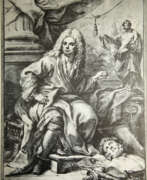

Pierre Le Gros was a French sculptor of the late seventeenth and early eighteenth centuries. He is known as a representative of the Baroque style and a master of the religious genre. His best sculptures were created on the orders of the Catholic Church.
Pierre Le Gros had a close "genetic" connection with art on both his father's and mother's side. His father, a court sculptor of King Louis XIV, had the same name (which is why Pierre Le Gros is often referred to as "the Younger"). His two maternal uncles, Gaspard and Balthazard Marsy, and his half-brother Pierre Lepautre were sculptors.
Pierre Le Gros was rejected in his homeland, but managed to achieve great professional success in Italy, where today you can see most of his work.


